Cover That Ugly Wall: A Pro’s Guide to Picking the Perfect Evergreen Climber
Over the last couple of decades, I’ve seen climbing plants do some real magic. They can take a boring brick wall and turn it into a living, breathing work of art. They’re masters at hiding an ugly view or creating that secret garden vibe. But honestly, I’ve also seen the other side of the coin, where the wrong plant choice leads to a total nightmare. I’m talking about frantic calls to remove ivy that has literally torn gutters off a house or seeing a pricey trellis buckle under the weight of a plant that got way too big, way too fast.
In this article
Choosing an evergreen climber isn’t just about picking a plant with pretty flowers. It’s about knowing how it grows, what it needs, and what it’s going to look like in ten years. A good choice is a gift that keeps on giving. A bad one? Well, that means constant work and repairs that can hit you hard in the wallet.
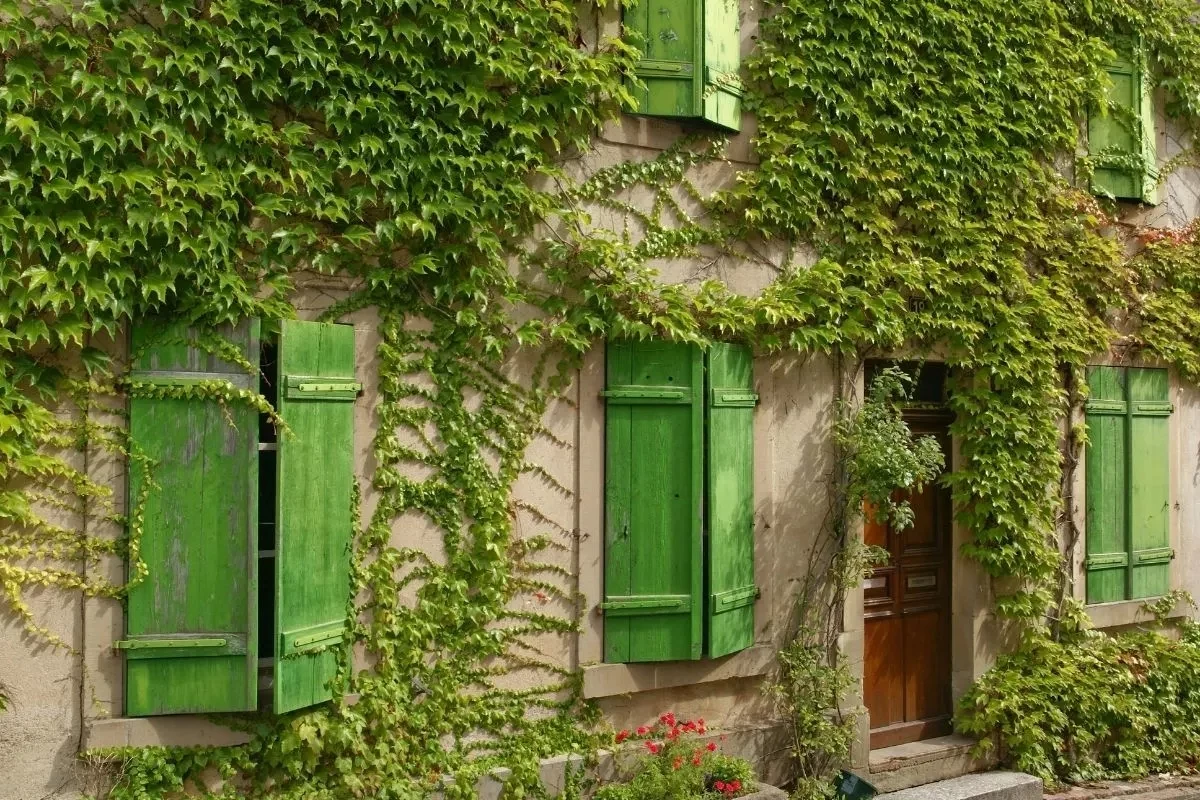
My goal here is to cut through the noise and share the kind of practical advice you get from being on your hands and knees working with these plants every day. Let’s get into it.
Quick Win: In a rush? Just remember this: NEVER use a self-clinging climber (like most Ivies) on a wooden fence, painted siding, or a wall with crumbly mortar. Stick with a twining plant on a separate wire frame instead. You just dodged the most expensive mistake in the book!
First, Understand How They Climb
Before you even glance at a plant tag at the nursery, you need to know how a plant climbs. This is the single most important piece of the puzzle. It dictates the kind of support it needs and what surfaces it can safely grab onto. Get this part wrong, and you’re setting yourself up for failure.
Self-Clinging Climbers
These are the plants that stick to walls all by themselves, using tiny aerial roots or little adhesive pads. Think of classic Ivy or a Climbing Hydrangea. They are incredibly effective, working their way into the microscopic nooks and crannies of a surface.
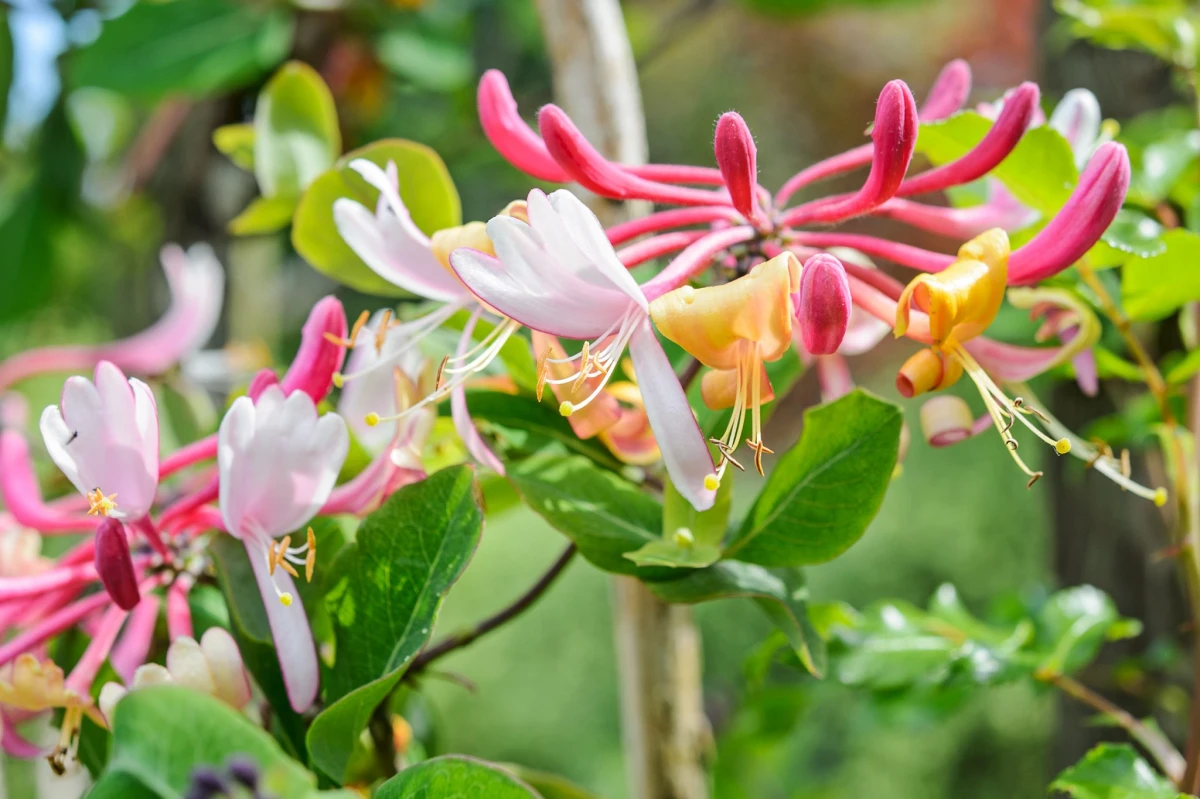
On a solid, well-maintained brick or stone wall, this is usually okay. But, and this is a big but, if you put them on a wall with soft mortar, flaking paint, or any kind of wood siding, you’re asking for trouble. Those little roots can trap moisture, widen small cracks, and will absolutely rip the surface off if you ever try to remove the plant. A heads up! Never plant a self-clinger on a surface you aren’t prepared to have permanently covered or potentially repaired down the line. Removing them is a real chore involving scraping, sanding, and often a full repaint.
Twining Climbers
Twiners are a whole different beast. Plants like Honeysuckle or Star Jasmine climb by wrapping their stems around something. They have zero ability to stick to a flat wall on their own. They need a support structure, like a trellis, wires, an arch, or a pergola to spiral around.
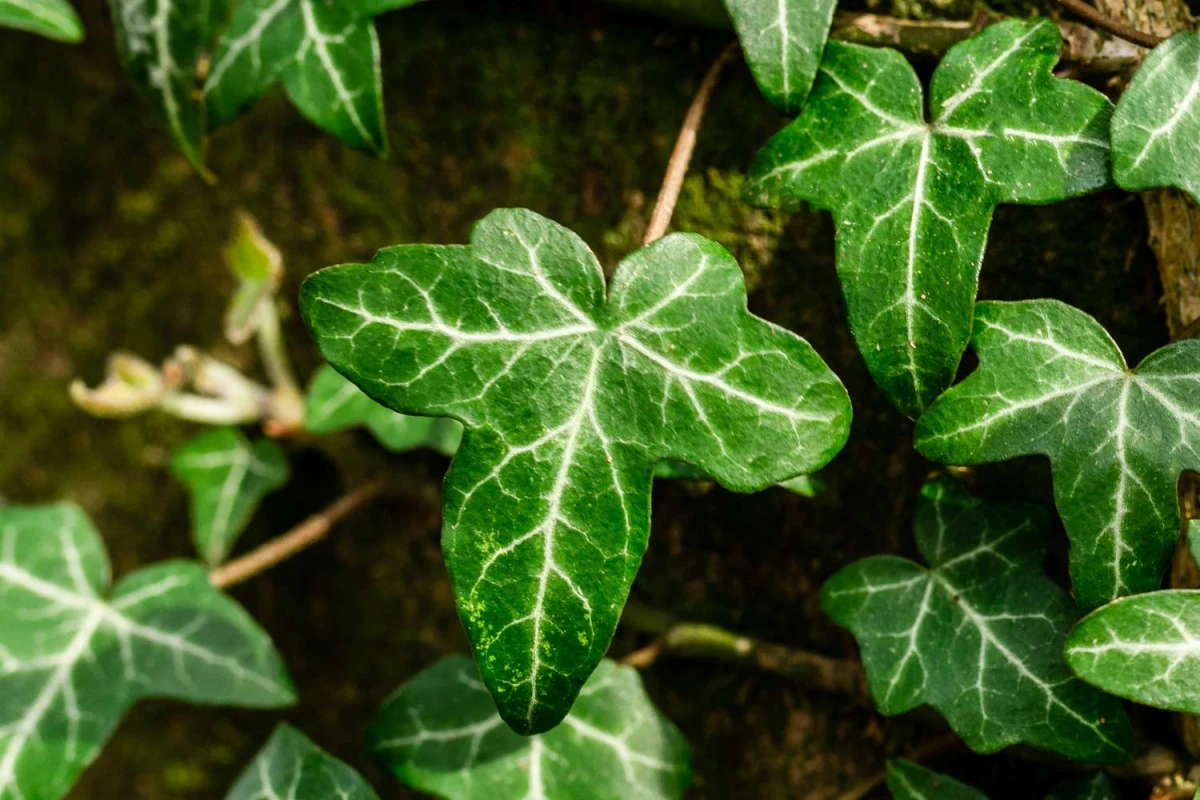
This is where you can set yourself up for long-term success. While a basic wooden trellis from a big-box store works, for a truly permanent solution, I always build a wire support system. It’s my go-to for almost every project.
My Pro Wire Trellis in 5 Steps:
- Get Your Gear: You’ll need heavy-duty vine eyes (they look like screws with a hole at the end), 12-gauge galvanized wire, and a couple of turnbuckles (for tensioning the wire). You can find all this at Home Depot or Lowe’s for probably under $40.
- Drill the Holes: Using a good drill with a masonry bit, install the vine eyes into the wall. Plan for a grid pattern, spacing them about 4-5 feet apart.
- Leave a Gap: This is critical. Make sure the vine eyes hold the wire at least 2 inches off the wall. This air gap prevents moisture from getting trapped behind the leaves, which is a major cause of fungal diseases.
- String the Wire: Run the wire horizontally between the eyes. I usually space my horizontal rows about 18 inches apart, from the ground up.
- Tighten Up: Attach a turnbuckle at the end of each run. This lets you crank the wire until it’s nice and taut. A tight wire won’t sag under the plant’s weight later on.
This simple setup is incredibly strong and basically invisible once the plant grows in.
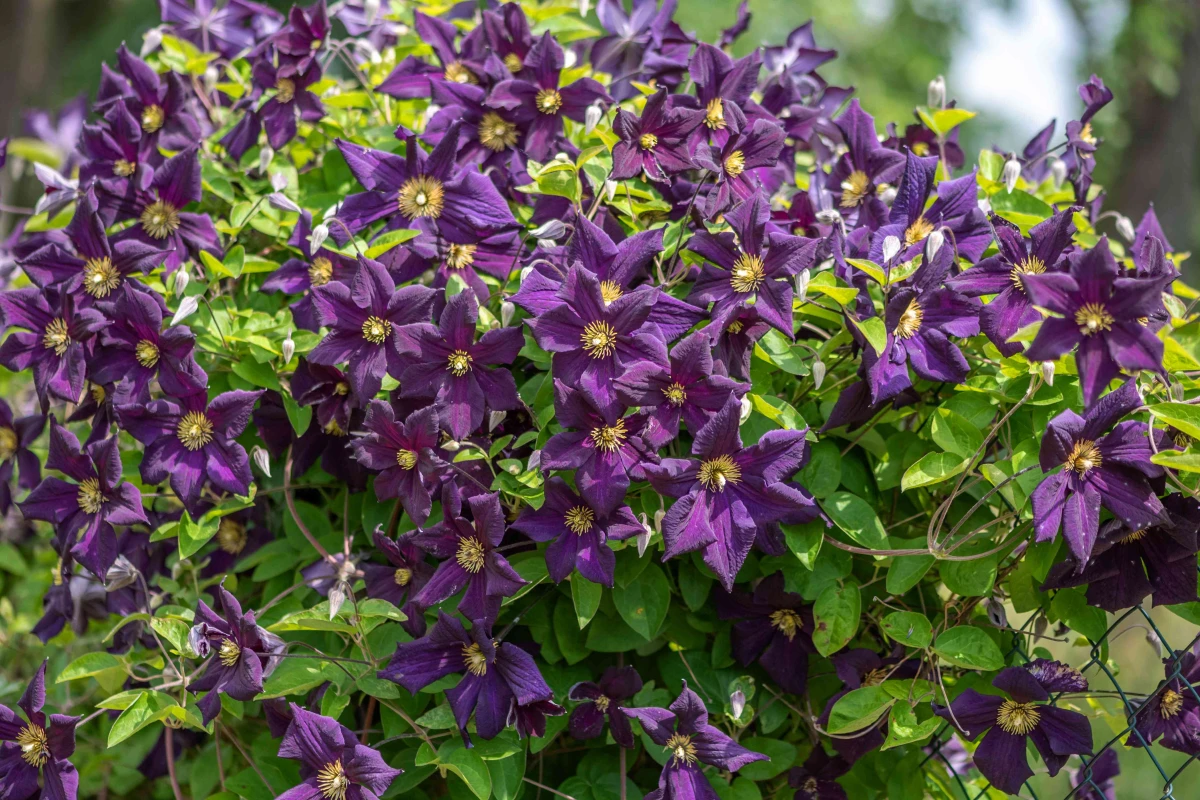
Scrambling Plants & Wall Shrubs
This last group includes plants like Firethorn (Pyracantha) or Winter Jasmine. They don’t really climb at all; they just produce long, flexible stems that you have to physically tie onto a support. This makes them a bit more high-maintenance, as you’re constantly guiding and shaping them. But on the flip side, it gives you complete artistic control over how they look.
A Pro’s Shortlist: The Best Climber For Your Wall
Okay, let’s talk plants. Here are the ones I trust and recommend most often, based on where you’re trying to grow them.
For a Sunny, Sheltered Wall (South or West-Facing): Star Jasmine
If a client wants elegance, fragrance, and a well-behaved plant, Star Jasmine (Trachelospermum jasminoides) is my top pick. It’s a twiner, so it’s perfect for that wire trellis we just talked about. The leaves are a gorgeous deep, glossy green, and in winter they can blush with a beautiful reddish-bronze. Then, in early summer, it’s covered in these little white star-shaped flowers that release the most incredible sweet scent. It’s pure magic on a warm evening.
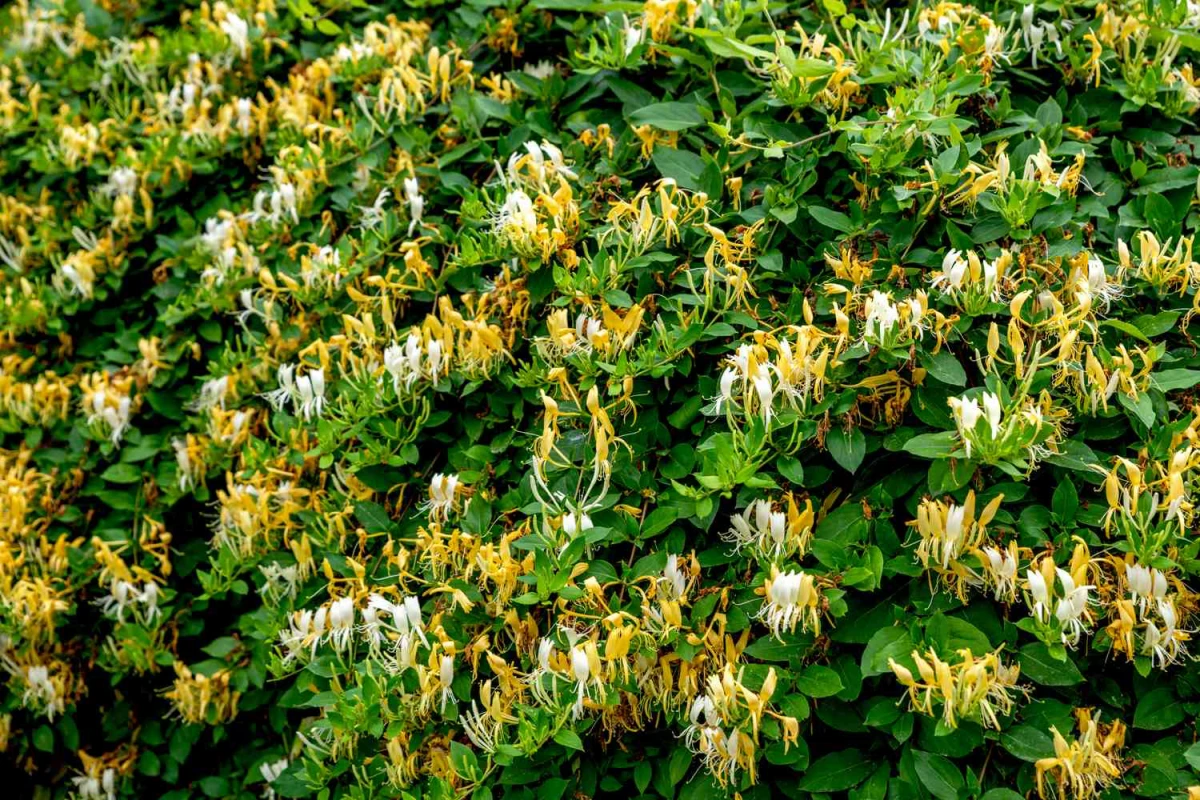
- Good to know: This one requires patience. It can take a couple of years to really find its footing. Don’t worry if it doesn’t do much in year one. Focus on training the main stems into a fan shape to create a good framework.
- Budget: It’s a bit of an investment upfront. Expect to pay around $30-$60 for a healthy 3-gallon pot, but its low-maintenance nature pays you back.
- Pruning tip: The name is misleading; it’s not a true jasmine. After it flowers in summer, just snip back any long, unruly stems that are growing away from the support. The goal is to keep it tidy, not to give it a major haircut.
For a Tough, Shady Wall (North or East-Facing): Firethorn
Firethorn (Pyracantha) is my secret weapon for those cold, unforgiving north-facing walls where nothing else seems to survive. It’s technically a wall shrub, so you have to tie it in, but its payoff is huge. You get year-round interest: glossy leaves, bee-friendly white flowers in spring, and then a massive display of bright red, orange, or yellow berries in the fall and winter that birds love.
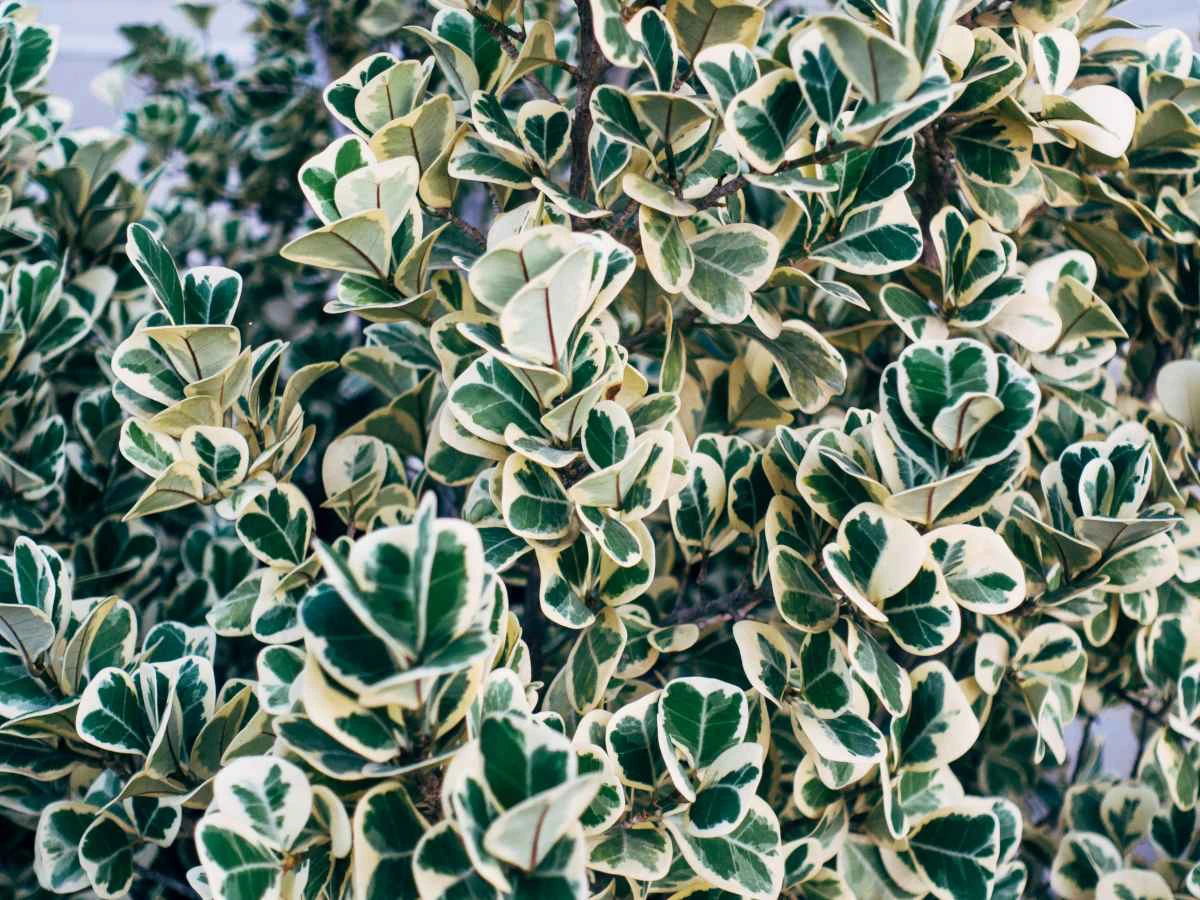
- Heads up! This plant has thorns. I’m not kidding around—they are sharp, strong, and will get you if you’re not careful. I once got a deep puncture from a branch that whipped back, and it got infected. Always, always wear thick leather gauntlet gloves when pruning or training this plant.
- Bonus: Because of those thorns, it’s an amazing intruder-deterrent screen. Just don’t plant it right next to a narrow walkway where people might brush up against it.
- Pro Tip: It can be prone to a disease called fireblight. When you’re at the nursery, look specifically for disease-resistant varieties like ‘Saphyr Rouge’. It’s a small detail that saves a lot of headaches.
For Big Walls & Fast Coverage: Evergreen Clematis
This is a beast of a climber, in the best way possible. Evergreen Clematis (Clematis armandii) is a twining vine that grows incredibly fast, with long, leathery, spear-shaped leaves. In late winter, it explodes in a cascade of almond-scented white flowers. It’s a real showstopper.

- The Catch: Its main challenge is its sheer size and speed. It can easily get over 25 feet tall. This is NOT for a small trellis. It needs a big, sturdy wall or pergola to really shine.
- Pruning is crucial: You MUST prune this one right after it finishes flowering in the spring. If you wait and prune it in the fall, you’ll cut off all the buds for next year’s show. I saw a newbie make this mistake once, and the client got zero flowers. A tough lesson.
- Common Problem: It tends to get a ‘bare bottom’, with all the leaves and flowers at the top. The simple solution is to plant some bushy, medium-sized shrubs in front of it to hide its woody legs.
The Truth About English Ivy
I have a love-hate relationship with Ivy. It’s an amazing, tough-as-nails plant that provides incredible habitat for wildlife and thrives in deep shade. But it’s aggressive and needs to be treated with respect and a very firm hand.
To be frank, I only recommend planting it in very specific situations. First, check if it’s considered an invasive species in your area (like in the US Pacific Northwest). If it is, don’t plant it. Second, only put it on a rock-solid masonry wall that you’re happy to have covered forever. Third, you must commit to pruning it twice a year, no excuses. I once had a job where neglected ivy had cost the homeowner thousands in water damage after it grew under the roof tiles. That’s the reality.
It’s tempting because it’s cheap—you can often find a pot for under $15. But unless you’re ready for the commitment, it’s a risk.
Planting Trick: Beat the ‘Rain Shadow’
Here’s a final pro tip that makes a huge difference. The base of any wall is surprisingly dry. The wall itself acts like an umbrella, creating a ‘rain shadow’ where very little water naturally falls. Many climbers fail because they’re planted right up against the wall and die of thirst.
The solution is simple. Dig your planting hole about 12 to 18 inches away from the base of the wall. Mix some good compost into the soil you dug out to give it a rich start. Place the plant in the hole, and then lean the top of the plant back towards the wall and its support at a 45-degree angle. This way, the roots are out in the open where they can get rain, but the stems are ready to start their journey upwards. It’s a small step that sets your climber up for a long, healthy life.
Okay, over to you! What ugly wall or fence are you trying to cover? Tell me about it in the comments and I’ll try to give you my best recommendation!
Inspirational Gallery
Want a wall that smells as good as it looks?
Think beyond visual appeal and consider fragrance. A strategically placed Star Jasmine (Trachelospermum jasminoides) near a patio or bedroom window will fill your summer evenings with an intoxicating, sweet scent. For an earlier perfume, the almond-scented blossoms of Clematis armandii ‘Apple Blossom’ are a true delight in late winter and early spring, promising that warmer days are on their way.
A study by the University of Oxford found that a living green wall can reduce wall surface temperatures by as much as 12°C (22°F) on a hot day.
This isn’t just a comfort-booster for your outdoor space. It’s a natural air conditioner for your home, potentially reducing the energy needed for cooling during the summer months. Your beautiful wall is also a smart, eco-friendly investment.
Wooden Trellis: Offers a classic, rustic charm and provides excellent support. However, it can rot over time, especially in damp climates, and may need replacing. It’s often the star of cottage-style gardens.
Wire System: Discreet and modern, using stainless steel vine eyes and tensioned wire (like those from Gripple). It’s incredibly durable, low-maintenance, and allows the plant itself to be the main feature. A perfect choice for minimalist or contemporary homes.
Before you get excited about the flowers, pay attention to the foliage. The texture and shape of the leaves are what you’ll be looking at all year long. Contrast the large, dramatic leaves of a Fatshedera Lizei with the delicate, fern-like foliage of a climbing Akebia. Or, for a sleek, glossy look, nothing beats the deep green leaves of a Star Jasmine. Mixing textures can create a rich, layered effect that has interest even without a single bloom.
- Less aggressive pruning needed year after year.
- A stronger, more manageable structure that won’t overwhelm its support.
- No risk of it prying open window frames or lifting roof tiles.
The secret? Choosing a slow-to-start but incredibly elegant climber. While a fast grower gives quick results, a more patient choice like the climbing hydrangea Pileostegia viburnoides rewards you with sophisticated, dense coverage that’s built to last without becoming a thug.
A common mistake: Planting your climber right up against the base of the wall. This is a recipe for failure. The soil at the base of a wall is often in a ‘rain shadow,’ meaning it’s exceptionally dry and nutrient-poor. Always plant your climber at least 30-45 cm (12-18 inches) away from the wall, allowing for better soil, root development, and crucial air circulation to prevent fungal diseases.
For a true winter showstopper, consider the ‘Silk Tassel’ shrub, Garrya elliptica ‘James Roof’. While technically a wall-trained shrub rather than a climber, its long, silvery catkins, which can reach up to 20cm, provide stunning architectural interest from December to February when little else is happening in the garden.
For twining plants, you can create a sleek and almost invisible support system yourself. All you need are some strong vine eyes (masonry-specific rawl plugs and screw-in eyes), a spool of 2-3mm galvanized wire, and a pair of tensioners. Plan a grid pattern on your wall with points every 1.5m (5ft). Install the vine eyes, thread the wire horizontally, and tighten. It’s a professional-looking solution that lasts for decades and lets the plant be the star.
Not all evergreen climbers are just green. Introduce a splash of year-round color with variegated varieties. The leaves of Hedera helix ‘Goldheart’ feature a bright, golden-yellow center, perfect for brightening a shady north-facing wall. For a more subtle effect, the creamy-white margins of Euonymus fortunei ‘Emerald Gaiety’ (which can be trained as a climber) can offer a crisp, clean look against dark brickwork.
Your new green wall is more than just a pretty face; it’s a five-star hotel for wildlife. The dense foliage of an established climber provides crucial winter shelter for wrens and other small birds. In spring and summer, the fragrant flowers of an evergreen Honeysuckle like Lonicera henryi are a magnet for bees and other pollinators, turning your wall into a living, buzzing ecosystem.










